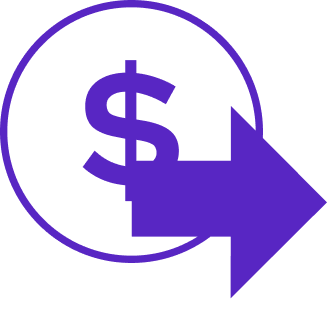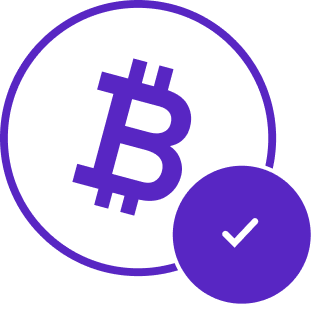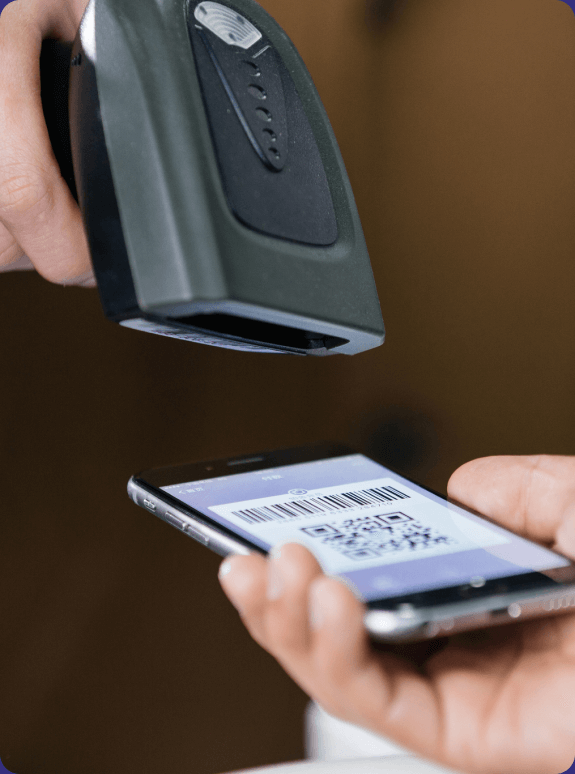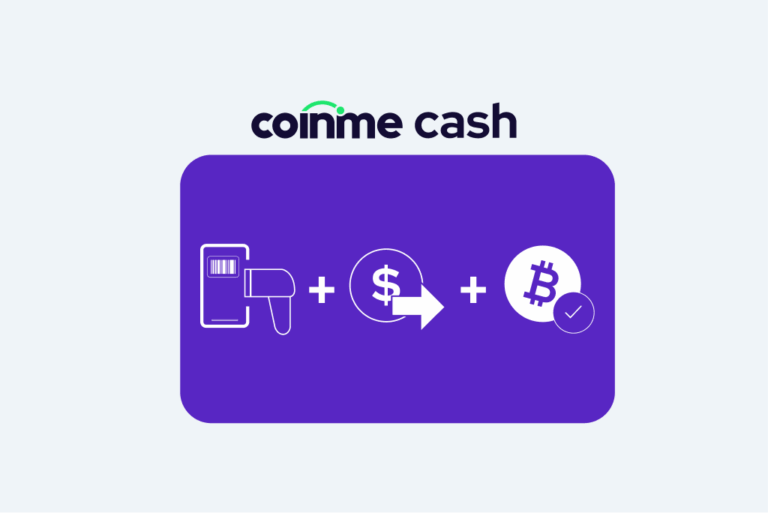Summary
One of the most common questions people ask is why Bitcoin ATMs charge a fee and what’s included in that fee. The first and most important thing to understand is that any reputable Bitcoin ATM operator will be transparent and upfront about their fees, which are typically in place to ensure a secure and positive customer experience.
In 2013, the world’s first Bitcoin ATM opened in a coffee shop in Vancouver, Canada. A revolution at the time, Bitcoin ATMs have since taken off. Today, there are thousands of Bitcoin ATMs across the globe, with the greatest number in North America. However, these kiosks are still relatively new, which means continued education and learning are necessary. Knowing how to use a Bitcoin ATM – including understanding Bitcoin ATM fees – is an important step for anyone interested in crypto-to-cash transactions.
What are Bitcoin ATMs?
Similar to using a regular ATM to deposit and withdraw cash, Bitcoin ATMs allow users to sell and buy cryptocurrency with cash. Despite the name, Bitcoin ATMs often deal in several cryptocurrencies, including Bitcoin, Ethereum, ChainLink, Litecoin, and XLM. They also tend to be located in convenient locations like grocery stores and shopping malls.
Bitcoin ATMs make cryptocurrency more accessible to millions of people. They’re a great gateway to crypto beginners because they are easy to use, fast, and accessible. Bitcoin ATM kiosks are also secure – they use blockchain technology to process transactions securely. They also tend to charge a fee for services.
Bitcoin ATM Fees: What’s included
One of the most common questions people ask is why Bitcoin ATMs charge a fee and what’s included in that fee. The first and most important thing to understand is that any reputable Bitcoin ATM operator will be transparent and upfront about their fees, which are typically in place to ensure a secure and positive customer experience.
Here are just a few of the costs that Bitcoin ATM fees cover:
- Regulatory Compliance: The safest and most secure Bitcoin ATMs are licensed and regulated by the U.S. federal government. This keeps the ATM (and its customers) safe from illicit activities like money laundering. It also means that Bitcoin ATM operators have to comply with any regulations passed down by lawmakers. Since Bitcoin ATMs are still relatively new, they’re subject to more compliance regulations than established institutions such as banks.
- Functionality: Running a Bitcoin ATM requires hardware, Internet access, security, maintenance, and secure transport of cash to and from the machines. The fees you pay ensure these things are taken care of and keep Bitcoin ATMs running smoothly.
- Accessibility: One of the greatest things about Bitcoin ATMs is their accessibility. They’re often located in high-traffic areas, and Bitcoin ATM providers need to pay to place and maintain their machines in these locations.
- Customer Support: Like any service provider, Bitcoin ATM operators need to offer support to their customers whenever a question or issue arises. Fees will also cover this customer service feature.
Bitcoin ATM Exchange vs. Network Fees – What’s the difference?
Bitcoin ATM Exchange Fees
A Bitcoin ATM exchange fee – also called an operator fee – is what the Bitcoin ATM provider charges for the exchange of cash to crypto. This typically covers operating costs like regulatory compliance, customer support, and more.
The amount of crypto you’ll get will vary depending on the fees at the Bitcoin ATM you use. Most Bitcoin ATMs charge fees ranging from 10% to 25%. Many advertise lower fees but typically end up adding extra fees on top of your transaction later on.
Purchases made at Coinme locations incur only an exchange fee, and not a network fee. Network fees are only incurred if the crypto is sent out of the Coinme wallet.
Network Fees
Any cryptocurrency transaction which is done on-chain will incur a network fee. Think of these fees as when you send crypto to another wallet. A network fee, also called a network transaction fee, covers the cost of broadcasting a crypto transaction onto the blockchain. The miners who do this work receive network fees as payment, and the network fee you pay depends on the crypto you’re buying or selling and current network activity.
While network fees are inevitable, they’re also not very large. It depends on the blockchain, but they typically range from $1 to $6 and are independent of the amount you’re transacting and the operator fee.
Which Bitcoin ATM has the lowest fees?
At Coinme, our Coinstar Bitcoin ATM network has a competitive and transparent fee structure. That includes all operator fees, so you’ll know exactly how much crypto your cash can buy before you even begin your purchase.
For a lower fee option, Coinme has partnered with MoneyGram locations to offer users the opportunity to buy Bitcoin with a 4% cash exchange fee in addition to a $2.75 transaction fee.
While many other Bitcoin ATM operators may advertise a lower upfront fee, keep in mind that they often include other unseen fees in the transaction. With Coinme and Coinstar, your crypto purchase automatically loads to your Coinme wallet – no surprise blockchain fee and no wait.
How much crypto you can buy with $100 at a Bitcoin ATM
If you have $100 cash and plan to use it to buy or sell cryptocurrency at a Bitcoin ATM for cash, there are a few different ways your transaction can go, depending on the Bitcoin ATM operator you use.
- At a 12% fee with a $5 network fee, you’d receive a total of $83
- With a flat 15% fee, you’d receive a total of $85
- An 18% operator fee with a $2 network fee would leave you with $80
You can figure out dollar-to-crypto exchange rates by checking current market prices.
Bitcoin ATM Fees and selling crypto
If you’re selling your crypto for cash at a Bitcoin ATM, you should also expect to incur a fee. Fees for selling crypto can also vary greatly depending on the Bitcoin ATM operator you use. Some operators charge the same fees for buying and selling, while others offer lower fees for selling.
At Coinme, fees for cashing out crypto at one of our participating ATMs are competitive – up to 1.99% cash exchange fee plus a $2.50 transaction fee.
Using a Bitcoin ATM
If you’ve never used a Bitcoin ATM before, knowing the steps before you go can make the process much smoother. Here are some tips:
- Create an account before you do anything else. Your account will set you up to buy and sell crypto for cash in moments.
- Visit the Bitcoin ATM you plan to use. You can find a Bitcoin ATM by using a Bitcoin ATM Locator.
- If you’re selling crypto, initiate the sale before heading to the Bitcoin ATM.
- Once you’re at the Bitcoin ATM, follow the steps on the screen. You should be able to see all fees before completing your transaction. You can also calculate fees ahead of time so there are no surprises.
- Complete your transaction and convert your cash to crypto (or vice versa) in seconds.
Buying and selling crypto with Coinme
While Bitcoin ATM fees may seem confusing, they don’t have to be. Any reputable Bitcoin ATM operator will be open about their fee structure, meaning you should feel confident going into any transaction.
At Coinme, our goal is to provide a positive experience for our customers when they use our Bitcoin ATMs. To us, that means offering a transparent, upfront, and competitive fee structure, operating the largest cryptocurrency cash network in the world, and providing outstanding customer service.
If you’re ready to start exchanging crypto for cash with a Bitcoin ATM operator that is reputable, licensed, and widespread (40,000+ locations to buy and sell crypto with cash), create a free account today!





 today and save big! Get up to 35% more crypto for your cash at 10,000 retailers nationwide.
today and save big! Get up to 35% more crypto for your cash at 10,000 retailers nationwide. 


